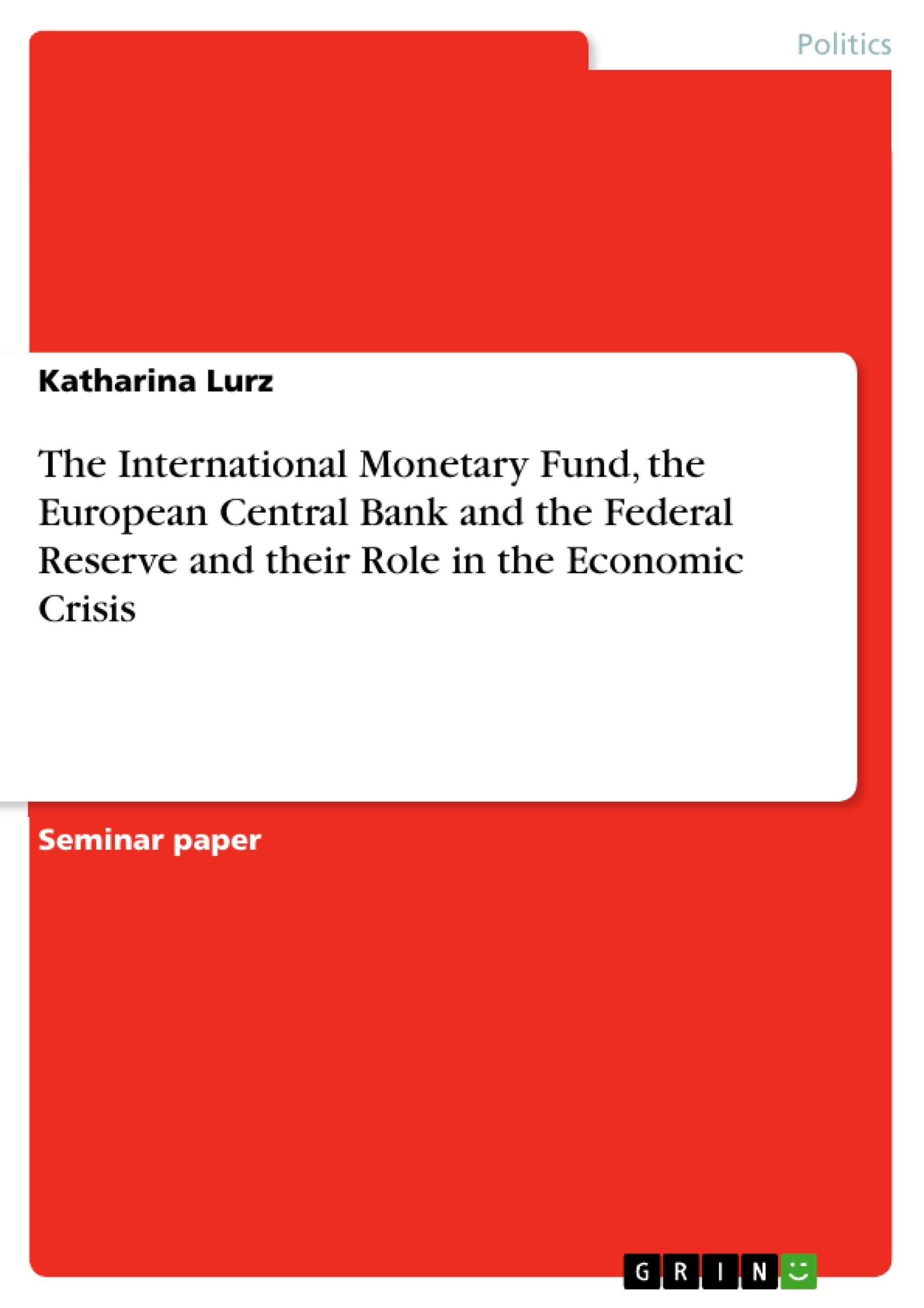This term paper is going to elaborate on the tasks and functions of certain international financial institutions, and subsequently on their role and course of action in the economic crisis. The institutions selected for that end are the International Monetary Fund, the European Central Bank and the Federal Reserve. Interestingly, all of these institutions have different spheres of influence, namely worldwide, Europe and the US, which also responds to the global character of the crisis itself. This suggests a global rescue effort which "transcended national boundaries" (Mihm and Roubini 177). This paper is concerned with the question what significant measures the respective institutions took and whether these actions were consistent with their original mandate and key objectives. For this purpose, each international institution will be examined individually, first according to their function and tasks (in tranquil times), and then with focus on their measures and reactions in the course of the economic crisis.
Inhaltsverzeichnis (Table of Contents)
- Introduction
- The International Monetary Fund
- The Institution
- The IMF's Role in the Economic Crisis
- The European Central Bank
- The Institution
- The ECB's Role in the Economic Crisis
- The Federal Reserve
- The Institution
- The Fed's Role in the Economic Crisis
- Conclusion
Zielsetzung und Themenschwerpunkte (Objectives and Key Themes)
This paper examines the role of three major international financial institutions - the International Monetary Fund (IMF), the European Central Bank (ECB), and the Federal Reserve (Fed) - in responding to the recent economic crisis. The paper aims to understand their actions and determine whether they aligned with their original mandates and key objectives. It explores how these institutions navigated the challenges posed by the global financial crisis, the euro area sovereign debt crisis, and the subsequent re-intensification of the crisis.
- The roles and functions of international financial institutions in times of economic stability.
- The response of the IMF, ECB, and Fed to the economic crisis, focusing on their actions and their consistency with their mandates.
- The effectiveness of the measures taken by the institutions in addressing the crisis.
- The impact of the crisis on the global monetary system and the role of these institutions in stabilizing it.
- The challenges faced by international financial institutions in coordinating global responses to economic crises.
Zusammenfassung der Kapitel (Chapter Summaries)
- Introduction: This chapter provides an overview of the economic crisis, outlining its different phases and its impact on global financial markets. The chapter introduces the three institutions - the IMF, ECB, and Fed - that will be examined in detail and highlights the global nature of the crisis and the need for coordinated international efforts.
- The International Monetary Fund: This chapter delves into the IMF's structure, its mandate, and its key functions, including surveillance, lending, and technical assistance. It explores how the IMF has adapted its approach to respond to the economic crisis, particularly by expanding its lending programs and implementing new emergency support measures.
Schlüsselwörter (Keywords)
The primary focus of this paper centers around the role of key international financial institutions, specifically the International Monetary Fund (IMF), the European Central Bank (ECB), and the Federal Reserve (Fed), in navigating the recent economic crisis. The text examines the institutions' actions and their alignment with their original mandates and objectives. Core themes explored include the global nature of the crisis, the effectiveness of coordinated international responses, and the evolving role of these institutions in a rapidly changing global financial landscape. Key terms and concepts include financial crisis, global monetary cooperation, international financial institutions, surveillance, lending, technical assistance, and emergency support mechanisms.
- Quote paper
- Katharina Lurz (Author), 2015, The International Monetary Fund, the European Central Bank and the Federal Reserve and their Role in the Economic Crisis, Munich, GRIN Verlag, https://www.grin.com/document/432062



